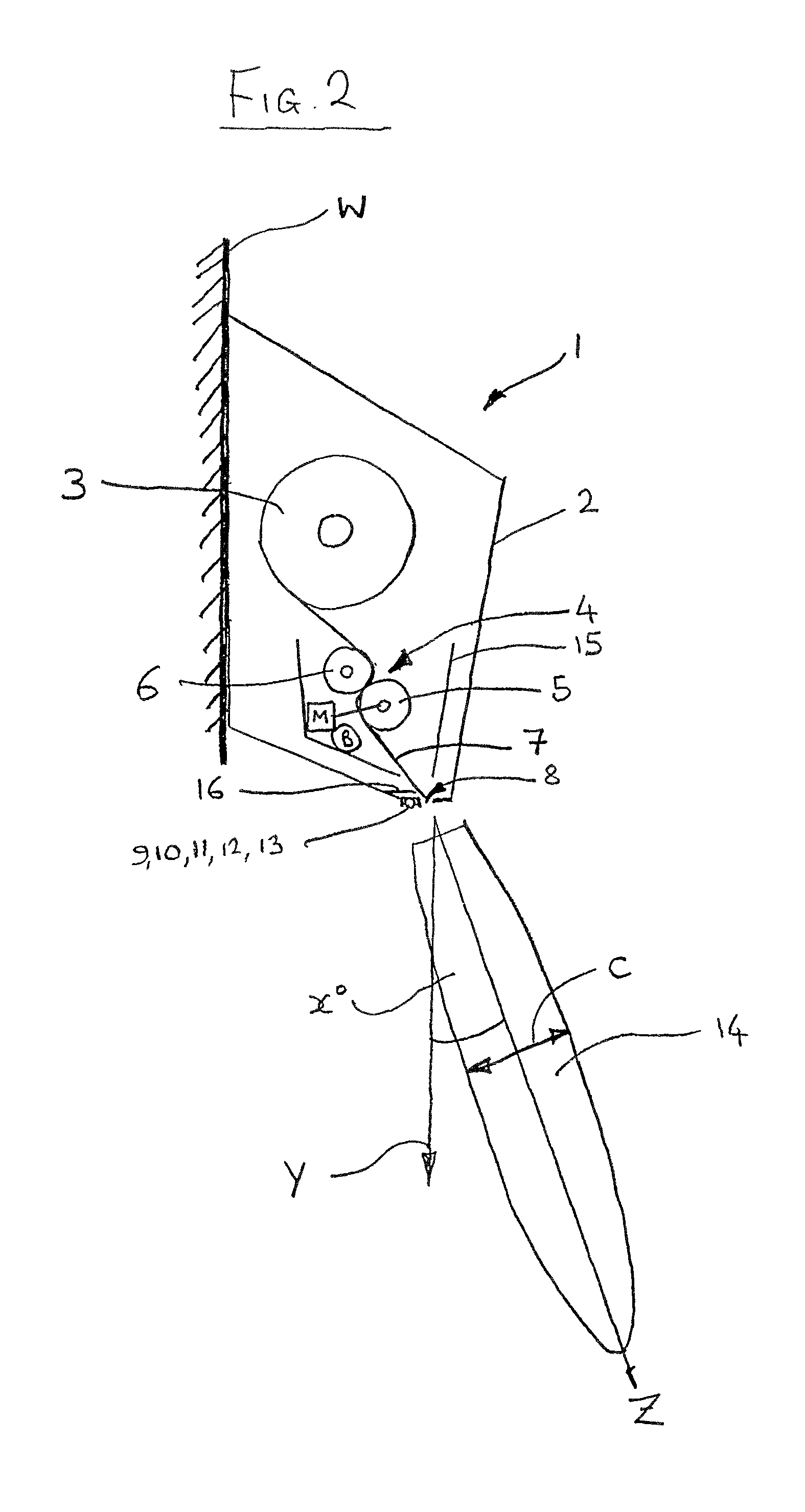Automated dispenser with sensor arrangement
a dispenser and sensor technology, applied in the field of dispensers, can solve the problems of difficult user's hand distinguishing from the background ir, dispensing to occur, and problems such as the amount of power used, and achieve the effect of less power and less power
- Summary
- Abstract
- Description
- Claims
- Application Information
AI Technical Summary
Benefits of technology
Problems solved by technology
Method used
Image
Examples
Embodiment Construction
[0044]FIG. 1 and FIG. 2 show a dispenser 1 in front and side views respectively, whereby FIG. 2 shows the dispenser 1 attached at its rear side to a wall W (the means of attachment are not shown but may be of any suitable type such as screws, adhesive, or other attachment means), whereby the rear surface of the dispenser lies against said wall W which is normally vertical.
[0045]The dispenser 1 comprises a housing 2, within which is located a product supply, in this case a supply of paper in a roll 3. The roll 3 is suitably a roll of continuous non-perforated paper, but may also comprise perforated paper. Also located in the housing 2 is a paper transport mechanism 4 preferably in the form of a modular drive cassette with its own casing 15, which can preferably be removed as a single unit from the housing 2 when the housing is opened.
[0046]FIG. 1 shows the paper roll 3 and the transport mechanism 4 which feeds paper from the roll towards a discharge outlet (see further description be...
PUM
 Login to View More
Login to View More Abstract
Description
Claims
Application Information
 Login to View More
Login to View More - R&D
- Intellectual Property
- Life Sciences
- Materials
- Tech Scout
- Unparalleled Data Quality
- Higher Quality Content
- 60% Fewer Hallucinations
Browse by: Latest US Patents, China's latest patents, Technical Efficacy Thesaurus, Application Domain, Technology Topic, Popular Technical Reports.
© 2025 PatSnap. All rights reserved.Legal|Privacy policy|Modern Slavery Act Transparency Statement|Sitemap|About US| Contact US: help@patsnap.com



